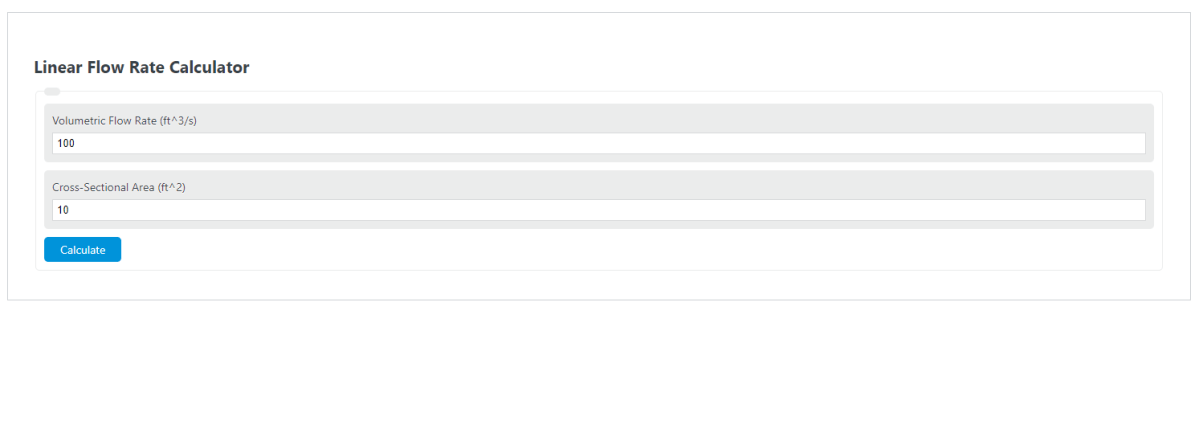Enter the volumetric flow rate and the cross-sectional area into the calculator to determine the linear flow rate.
- Volumetric Flow Rate Calculator
- Mass Flow Rate Calculator
- Water Flow Rate Calculator
- Linear Speed Calculator
Linear Flow Rate Formula
The following equation is used to calculate the Linear Flow Rate.
LFR = Q / A
- Where LFR is the linear flow rate (ft/sec)
- Q is the volumetric flow rate (ft^3/sec)
- A is the cross-sectional area (ft^2)
To calculate a linear flow rate, divide the volumetric flow rate by the cross-sectional area.
What is a Linear Flow Rate?
Definition:
A linear flow rate measures the linear distance per unit of time that a liquid or gas is moving through an enclosed pipe or channel.
How to Calculate Linear Flow Rate?
Example Problem:
The following example outlines the steps and information needed to calculate linear flow rates.
First, determine the volumetric flow rate. In this example, the volumetric flow rate is measured to be 12.5 ft^3/second.
Next, determine the cross-sectional area of the pipe. In this case, the cross-sectional area is measured to be 3 ft^2.
Finally, calculate the linear flow rate using the formula above:
LFR = Q / A
LFR = 12.5 / 3
LFR = 4.166 ft/second
FAQ
What factors can affect the linear flow rate in a pipe?
The linear flow rate in a pipe can be affected by several factors including the viscosity of the fluid, the pipe’s diameter, the roughness of the pipe’s interior surface, any bends or obstructions in the pipe, and the pressure difference driving the flow.
How does changing the cross-sectional area of a pipe affect the linear flow rate?
Changing the cross-sectional area of a pipe affects the linear flow rate directly. According to the formula LFR = Q / A, if the cross-sectional area (A) increases while keeping the volumetric flow rate (Q) constant, the linear flow rate (LFR) decreases. Conversely, decreasing the cross-sectional area increases the linear flow rate.
Can the linear flow rate formula be used for any type of fluid?
Yes, the linear flow rate formula LFR = Q / A can be applied to any fluid, whether it’s a liquid or a gas, as long as you have the necessary volumetric flow rate and cross-sectional area measurements. However, the fluid’s properties, such as viscosity and density, might affect the accuracy or applicability of simple calculations in complex flow conditions.
